Bel Ki Patiya Mehndi Design: A Delicate and Intricate Art and Beauty.
Table of Contents
Introduction:
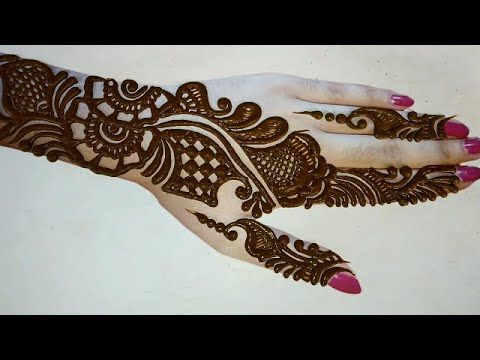
Mehndi, also known as henna, has been an integral part of cultural celebrations and traditions for centuries. From weddings to festivals, mehndi is adorned by people across different cultures as a form of body art. One fascinating variant of mehndi design is the Bel Ki Patiya Mehndi Design, which draws inspiration from the delicate patterns found on the leaves of the Bel tree. In this blog, we will explore the elegance and uniqueness of Bel Ki Patiya Mehndi Design.
The Inspiration Behind Bel Ki Patiya Mehndi Design:
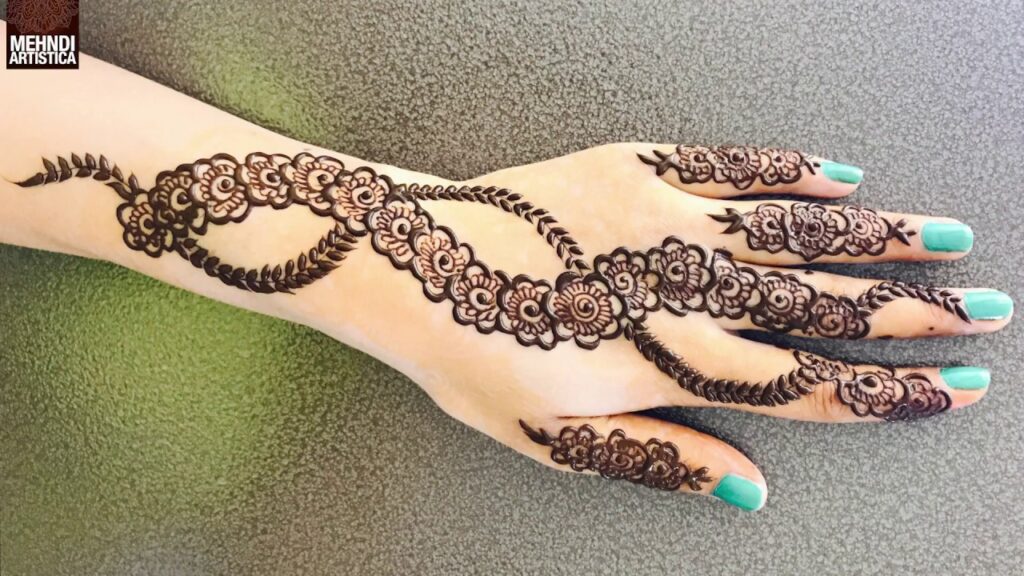
The Bel tree, scientifically known as Aegle marmelos, holds a special place in Indian mythology and is considered sacred. The leaves of the Bel tree are intricately shaped, featuring delicate veins and a distinctive pattern. Artists have creatively incorporated the beauty of these leaves into Mehndi designs, resulting in the mesmerizing Bel Ki Patiya Mehndi Design.
Characteristics of Bel Ki Patiya Mehndi Design:
The Bel Ki Patiya Mehndi Design is characterized by its fine lines, intricate details, and the use of repetitive patterns. The design often starts from the base of the hand or single finger mehndi design and extends gracefully, resembling the arrangement of the Bel tree leaves. It is a form of minimalist Mehndi art, focusing on capturing the essence of nature’s delicate creations.
Popular Elements and Patterns:
a) Veins and Lines: Bel Ki Patiya Mehndi Design prominently features the detailed veins and lines that mimic the natural patterns found on the Bel tree leaves. These thin lines create a sense of movement and add depth to the design.
b) Dots and Circles: Alongside the veins, small dots and circles are incorporated to enhance the overall aesthetics of the design. These elements bring balance and a touch of elegance to the intricate patterns.
c) Intricate Fillings: Bel Ki Patiya Mehndi Design often includes complex fillings between the veins, creating a visually appealing contrast. These fillings can be geometrical shapes, floral motifs, or other artistic elements that add depth and richness to the design.
Placement and Applications:
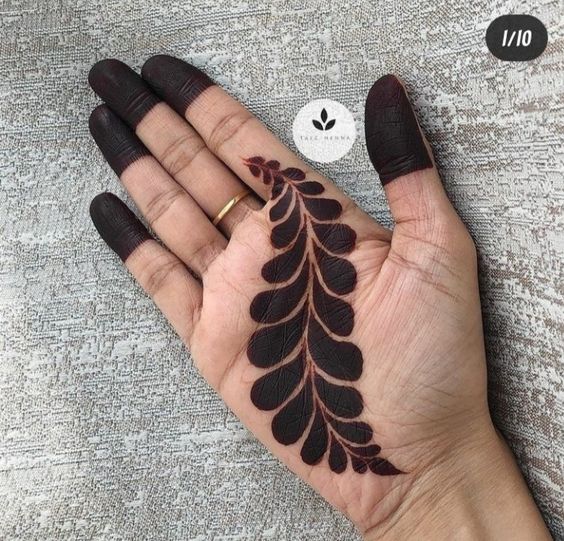
Bel Ki Patiya Mehndi Design is versatile and can be applied to various parts of the body. While it is commonly seen on the hands and fingers, it can also be applied to the feet or other body parts, depending on personal preference. The design’s delicate nature makes it suitable for both casual and formal occasions, allowing individuals to express their creativity and love for nature through Mehndi art.
Tips for Creating and Maintaining Bel Ki Patiya Mehndi Design:
a) Use Fresh Henna: For a vibrant and long-lasting design, ensure that the henna paste used is fresh and of good quality. This will ensure a rich and deep stain.
b) Patience and Precision: The intricacy of Bel Ki Patiya Mehndi Design demands patience and precision. Take your time to create the fine lines and patterns, ensuring accuracy and attention to detail.
c) Aftercare: To make your Bel Ki Patiya Mehndi Design last longer, avoid washing the design area for at least 6-8 hours. Apply a mixture of lemon juice and sugar to seal the henna paste and enhance the color. Avoid excessive water exposure and use natural oils to moisturize the design area.
Conclusion:
Bel Ki Patiya Mehndi Design is a testament to the beauty and diversity of Mehndi art. Its delicate patterns and inspiration from the Bel tree leaves create a stunning visual impact. Whether you’re attending a wedding, festival, or simply want to adorn your hands or fingers with a touch of nature’s elegance, Bel Ki Patiya Mehndi Design offers a unique and intricate choice.
The design’s fine lines, veins, and repetitive patterns capture the essence of the Bel tree leaves, showcasing the artistry and creativity of Mehndi artists. It is a versatile style that can be applied to various body parts, allowing individuals to express their personal style and enhance their overall look.
Creating a Bel Ki Patiya Mehndi Design requires patience, precision, and quality henna paste. With attention to detail, one can bring the delicate patterns to life, showcasing the beauty of nature on their hands or fingers. The design’s longevity depends on proper aftercare, avoiding excessive water exposure and providing gentle care to the henna-adorned area.
Whether you choose to wear Bel Ki Patiya Mehndi Design for a special occasion or simply to celebrate the beauty of nature, this style is sure to captivate and impress. Its elegance and intricate nature make it a timeless choice for Mehndi enthusiasts seeking a delicate and unique design.
So, let your hands or fingers become a canvas for the mesmerizing Bel Ki Patiya Mehndi Design, and embrace the beauty of nature’s delicate patterns in this enchanting art form.
FAQ on Bel ki patiya mehndi design
What is Bel Ki Patiya Mehndi Design?
Bel Ki Patiya Mehndi Design is a style of henna art that takes inspiration from the intricate patterns found on the leaves of the Bel tree (Aegle marmelos). It features delicate lines, veins, and repetitive patterns resembling the arrangement of these leaves.
Where is Bel Ki Patiya Mehndi Design typically applied?
Bel Ki Patiya Mehndi Design can be applied to various body parts, but it is commonly seen on the hands and fingers. It can also be applied to the feet or other areas, depending on personal preference.
What are the key elements and patterns in Bel Ki Patiya Mehndi Design?
The design incorporates elements such as thin lines resembling the veins of Bel tree leaves, small dots, circles, and intricate fillings between the veins. The fillings can include geometric shapes, floral motifs, or other artistic elements that enhance the overall design.
Can I create a Bel Ki Patiya Mehndi Design at home?
Yes, you can create a Bel Ki Patiya Mehndi Design at home. To do so, you will need fresh and high-quality henna paste. Take your time to create the delicate lines and patterns using a cone or applicator. Allow the henna to dry before gently scraping it off. Follow proper aftercare instructions to ensure a long-lasting design.
How long does Bel Ki Patiya Mehndi Design last?
The longevity of Bel Ki Patiya Mehndi Design depends on several factors such as the quality of henna used, individual skin type, and aftercare. Generally, henna stains last for about 1 to 3 weeks. However, the design on hands and fingers may fade faster due to frequent washing and rubbing.
Can Bel Ki Patiya Mehndi Design be customized?
Yes, Bel Ki Patiya Mehndi Design can be customized according to personal preferences. You can experiment with different patterns, sizes, and placements to create a unique design that suits your style and occasion.
Can Bel Ki Patiya Mehndi Design be combined with other Mehndi Styles?
Absolutely! Bel Ki Patiya Mehndi Design can be combined with other Mehndi styles to create a more elaborate and personalized look. It can be integrated with traditional Indian, Arabic, or contemporary designs, allowing for a fusion of styles and creativity.
Is Bel Ki Patiya Mehndi Design suitable for all occasions?
Yes, Bel Ki Patiya Mehndi Design is versatile and can be suitable for various occasions. It can be worn for weddings, festivals, parties, or even casual outings. The delicate and intricate nature of the design adds an elegant touch to any event.
How can I make my Bel Ki Patiya Mehndi Design last longer?
To make your Bel Ki Patiya Mehndi Design last longer, avoid excessive water exposure, rubbing, or scrubbing the design area. Apply a mixture of lemon juice and sugar to seal the henna paste and enhance the color. Moisturize the area with natural oils to prevent the henna from drying out quickly.
Can I remove Bel Ki Patiya Mehndi Design if I want to?
Yes, Bel Ki Patiya Mehndi Design will naturally fade over time as the skin exfoliates. If you want to remove it sooner, you can try gently exfoliating the area with a scrub or using natural remedies like lemon juice or diluted hydrogen peroxide. However, be cautious and gentle to avoid any skin irritation.


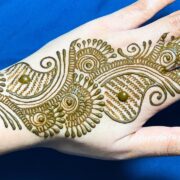
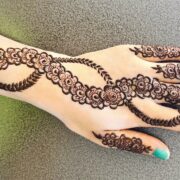

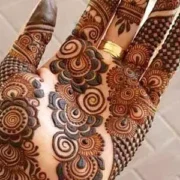

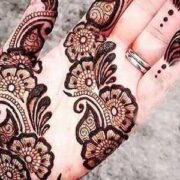
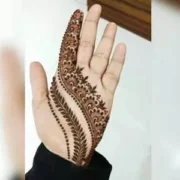
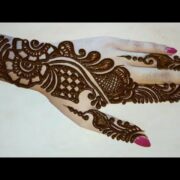


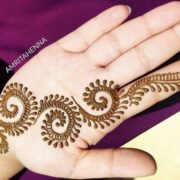
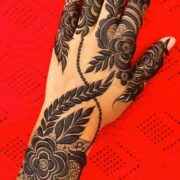

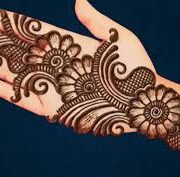
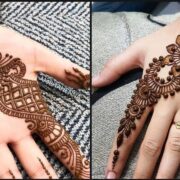
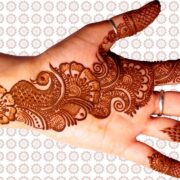

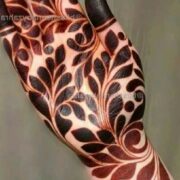

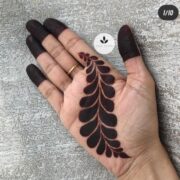
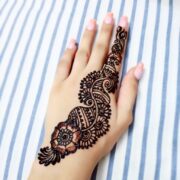





Pingback: 28 Single Finger Mehndi Design. Simple and easy - Mehndi Designs